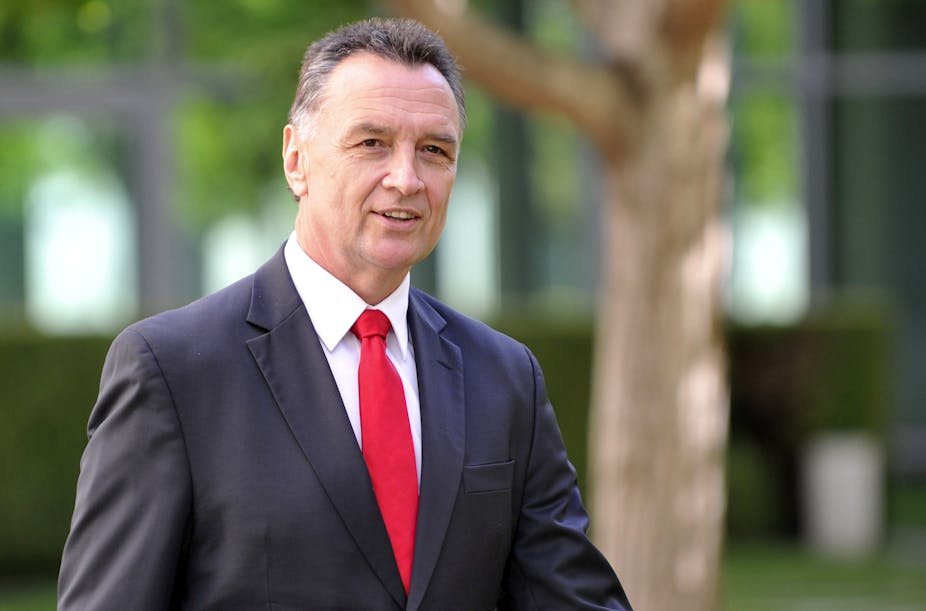Anyone believing new tertiary education minister Craig Emerson was just minding the higher education shop until the election has been proved wrong by this weekend’s announcement of funding cuts.
About A$2.3 billion will be harvested from higher education and go towards schools funding reform. Ahead of the Council of Australian Government’s meeting this week, the Prime Minister Julia Gillard said the government would use the extra funds to offer $2 for every $1 the premiers put in.
But the university cuts are significant, and not just for the amount of money involved.
The biggest policy shift is the conversion of the Student Start-up Scholarships from grants to loans. Under the current system, students receiving Youth Allowance, Austudy or Abstudy are paid A$1,025 lump sums twice a year. The scholarships are intended to cover large up-front expenses such as textbooks or equipment.
From 2014, new students will have to choose between forgoing the A$1,025 or adding it to their HELP debt.
Perhaps the government plans to distinguish between “capital” investment in education, to be funded through income-contingent loans, and living expenses, to be funded through welfare payments like Youth Allowance. Inevitably, however, this reform raises questions about whether all student income support will eventually be loans rather than grants.
The government is also trimming HELP loan scheme costs by ending discounts for up-front payments and voluntary early repayments.
Under the current system, students receive a 10 per cent discount if they pay their student contribution up-front. For example, the student contribution for a business student taking out a HELP loan is A$9,792 a year. By paying up-front with the discount the price comes down A$8,813.
The discount’s rationale is that HELP lending incurs interest subsidies and the risk of bad debt, which together cost taxpayers about A$1.5 billion a year. Up-front payments limit the government’s exposure to these expenses, but they have to pay the discount’s value to universities. That’s the money the government saves with this measure.
Of course, some savings will be lost later due to increased HELP lending. But there is evidence that many people who pay up-front will still do so without the discount, so the government is likely to come out ahead with this change.
The 5 per cent voluntary repayment bonus is supposed to be an incentive to repay HELP debt early, and so also reduce interest costs and the risk that the debt will go bad. For example, a person who voluntarily repays A$1,000 extra of their HELP debt, on top of compulsory payments via the tax system, would have A$1,050 deducted from their HELP debt.
The early repayment bonus is not achieving its objectives. A few years ago, the Australian Taxation Office published data showing that most voluntary repayments were made when the debt was nearly paid off in any case.
The bonus also interacts with a design flaw in the FEE-HELP loan scheme. Full-fee postgraduates and Open Universities Australia students can take out unnecessary FEE-HELP loans and then use the bonus to repay their debt for less than the original loan amount.
Effectively, they can engineer themselves a subsidy. Getting rid of the early repayment bonus is good public policy.
The same cannot be said of an “efficiency dividend” cut to university funding of 2 per cent in 2014 and 1.25 per cent in 2015. The cuts will apply to the core tuition subsidy Commonwealth Grant Scheme, to research student funding, to equity support, and to some other programs that less directly affect students.
It is very unlikely that hundreds of millions of dollars in genuine “efficiencies” can be found by next year, so the cuts will almost certainly have negative effects on the student experience.
For undergraduates, this poor outcome could have been avoided with compensating increases to student contributions, as has occurred on all previous occasions when public funding was reduced.
A further reform announced on Saturday goes beyond higher education, affecting all tax deductions for self-education expenses. These are to be capped at $2,000 a year. This will especially affect postgraduate coursework students whose degrees are linked to their jobs, the trigger for tax deductibility.
The after-tax impact on students could easily be thousands of dollars a year, depending on course fees and marginal tax rates.
Except for the “efficiency dividend” there is at least an arguable case for each policy change. But these latest announcements add to a long list of messy, ad hoc higher education cuts without any obvious strategy to save money at least expense to public policy goals.
Frequent fiddling undermines policies that are retained as well as those that are cut, as nobody knows what will go next. Long-term decision making by universities, their staff and their students needs more policy stability than we have.

